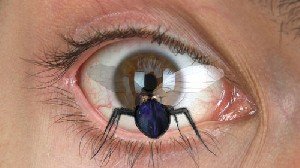Ignacio Pardo
dal 2/5/2007 al 31/5/2007
Segnalato da
Centro Galego de Arte Contemporanea
2/5/2007
Ignacio Pardo
Centro Galego de Arte Contemporanea CGAC, Santiago de Compostela
Senescencia

Senescencia
Ignacio Pardo’s creations (Lugo, Spain, 1947) have been featured at the most important Spanish video venues, including the video festivals in Vitoria (1986) and Cádiz (1987), which were both very prestigious in the eighties. After an apparent break in his production, he reappears now at CGAC with a monographic exhibition curated by Cristina Prego. Slightly alien to the Galician movida, Ignacio Pardo joined the group of videocreators in 1985 and he chose to work with humble domestic means in order to tackle his work in an essentially individual manner, consistent with his training and practice in plastic arts, instead of from the teamwork habits of the audiovisual industry. In fact, in his first video piece, Videoviolín (1985), we can detect the influence of Norman McLaren’s handmade cinema.
In a society dominated by the visual sphere, Ignacio Pardo conceives video as a support that allows him to throw some darts against the accepted ‘moral orthodoxy’, from its same language, shredding and tearing the nice wrapping that the mass media have created around reality, unveiling the darkest and most sinister corners of human existence, such as death, senescence, human desires and failures in the eternal search for happiness. Firmly convinced that art is only useful if it can transform reality and open new doors to places we would have never allowed ourselves to come, Ignacio Pardo’s work arises as an action against occultation, shedding light on the cruelty of existence or certain social vices like routine, which wander about his images like lost souls. The CGAC exhibition, Senescencia, has been built around a series of installations and projections whose leitmotif is the ephemeral cycle of the being, from the embryo to the final departure, including many of the themes and characteristic symbols of Ignacio Pardo’s prior trajectory.
Nevertheless, Senescencia, does not purport to be a retrospective on the artist’s work and only includes some earlier pieces, such as Clavos (1986), the first hologram he made at a course at Kiosco Alfonso in Corunna, or the video pieces Tránsito (1988) and Paseantes (2003), which work as some sort of connecting tissue of the consistency of the artist’s work and as the presentation of a theme that will be deployed in all the spaces of the CGAC basement. At the entrance and starting point of the exhibition, we find the horribly disturbing images of Tránsito (1988), followed by the later video Paseantes (2003), which gives the bony incarnation of death a more pleasant and playful presence, wandering about as a skeleton on a beach full of people of all ages.
In the heart of the exhibition, we find Bosque (2007) a surrounding wood mixing images of nature with a subtle eroticism that reminds us of Triángulo (1988), a piece conceived almost twenty years ago. All around, in the rooms nearby, on the walls, on the floor and on the screens suspended in space the symbols and analogies with which Ignacio Pardo has created his extremely personal work appear over and over again.
Our tour takes us to the central piece of the exhibition, which gives it its name and accurately summarises the great concerns running through Ignacio Pardo’s work. Senescencia (2007) is a diptych in which the naked bodies of an elderly couple are a reminder that every minute that passes in our lives takes us a little closer to death.
Centro Galego de Arte Contemporanea
Valle Inclan s/n 15704 - Santiago de Compostela



